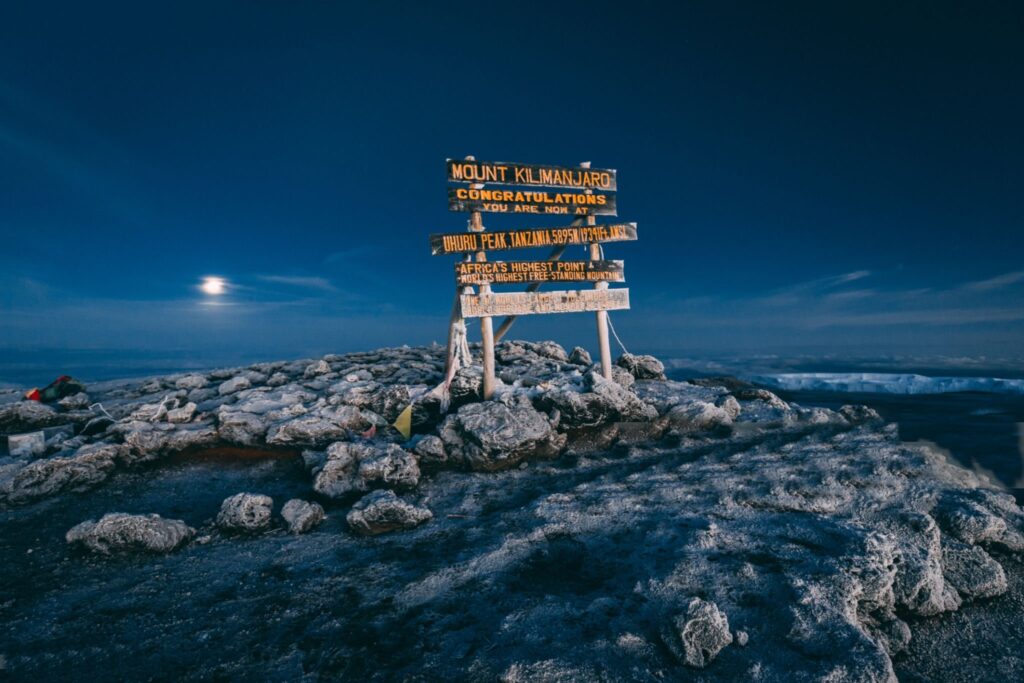The Ultimate Guide to Climbing Mount Kilimanjaro
Mount Kilimanjaro, Africa’s tallest peak and the world’s highest freestanding mountain, rises majestically from the plains of northern Tanzania to a staggering 5,895 meters (19,341 feet). Known as the “Roof of Africa,” this dormant volcano has captivated adventurers, climbers, and nature lovers from around the globe. Unlike other high-altitude peaks, Kilimanjaro is a non-technical climb, making it accessible to many—provided you are physically prepared and mentally determined.
Whether you’re seeking a life-changing experience, an epic adventure, or just want to stand on top of Africa, this comprehensive guide will help you plan your Kilimanjaro expedition.
1. Geography and Ecology
Mount Kilimanjaro is located near the equator in Tanzania, close to the Kenya border. It consists of three volcanic cones: Kibo (the summit), Mawenzi, and Shira. Of these, only Kibo is dormant—Mawenzi and Shira are extinct.
The mountain features five distinct climate zones:
- Cultivated Zone (800–1,800m) – Villages and farmland.
- Rainforest Zone (1,800–2,800m) – Lush, dense forest with abundant flora and fauna.
- Heath and Moorland (2,800–4,000m) – Grassy landscapes with giant groundsels and lobelias.
- Alpine Desert (4,000–5,000m) – Arid, cold desert with limited life.
- Arctic Zone (5,000–5,895m) – Snow, ice, and glaciers.
Best Time to Climb Kilimanjaro
Dry Seasons (Best Time)
- January to mid-March: Warmer, good visibility, fewer climbers.
- June to October: Cooler, dry weather, busier season.
Rainy Seasons (Avoid if Possible)
- Mid-March to May: Long rains.
- November to early December: Short rains.
While you can climb year-round, dry seasons are more comfortable and offer better summit success rates.
4. Fitness and Preparation
Physical Fitness
Climbing Kilimanjaro doesn’t require technical climbing skills, but it does demand cardiovascular fitness and stamina. Start preparing 2–3 months in advance with:
- Hiking practice with a backpack
- Cardio workouts: walking, running, stair climbing
- Strength training
Mental Preparation
Summiting is as much mental as it is physical. Be prepared for:
- Cold weather
- Long hiking days
- Altitude effects
- Sleeping in tents or huts
5. Altitude Sickness and Acclimatization
Altitude is the #1 challenge on Kilimanjaro. Acute Mountain Sickness (AMS) can affect anyone, regardless of fitness.
Prevention Tips
- Choose longer routes for better acclimatization.
- Climb slowly: “Pole Pole” (slowly, slowly) is the rule.
- Stay hydrated
- Consider medication: Diamox (speak with your doctor)
- Listen to your guide
Symptoms of AMS include headaches, nausea, dizziness, and fatigue. Always communicate with your guide if symptoms worsen.
6. Packing Essentials
Here’s a short list of essentials:
- Clothing: Base layers, insulating layers, waterproof outerwear
- Footwear: Broken-in hiking boots, camp shoes
- Accessories: Gloves, hats, sunglasses, headlamp
- Sleeping gear: Warm sleeping bag (rated for -10°C or lower)
- Daypack: With water bladder, snacks, sunscreen, camera
- Personal items: Medications, toiletries, wet wipes
Most tour companies provide tents, sleeping mats, and mess tents.
7. Guides, Porters, and Tour Operators
All Kilimanjaro climbs must be led by licensed guides. Porters carry most of your gear (except your daypack). Choose a reputable local operator, ideally one certified by KPAP (Kilimanjaro Porters Assistance Project) to ensure ethical porter treatment.
Expect:
- 1 guide for every 2-3 climbers
- 2–3 porters per climber
- 1 cook
9. Summit Day
This is the most challenging day. You’ll wake around midnight and hike 6–7 hours in the dark to reach Uhuru Peak, the summit. It’s cold, slow, and steep—but incredibly rewarding. After sunrise, you descend to base camp for lunch and continue down the mountain.
Responsible Travel and Conservation
Kilimanjaro is within Kilimanjaro National Park, a UNESCO World Heritage Site. Be a responsible climber:
- Don’t litter
- Follow guide instructions
- Support eco-conscious operators
Quick Facts
Kilimanjaro Climbing Routes
There are seven main climbing routes, each offering different scenery, duration, and levels of difficulty:
1. Marangu Route (“Coca-Cola Route”)
- Duration: 5–6 days
- Distance: ~72 km
- Accommodation: Huts
- Pros: Budget-friendly, hut accommodation
- Cons: Less scenic, lower summit success rate
2. Machame Route (“Whiskey Route”)
- Duration: 6–7 days
- Distance: ~62 km
- Accommodation: Camping
- Pros: Beautiful scenery, good acclimatization profile
- Cons: Crowded
3. Lemosho Route
- Duration: 7–8 days
- Distance: ~70 km
- Accommodation: Camping
- Pros: Scenic, less crowded, high success rate
- Cons: Slightly more expensive
4. Rongai Route
- Duration: 6–7 days
- Distance: ~72 km
- Accommodation: Camping
- Pros: Quieter, great for the rainy season
- Cons: Less varied scenery
5. Northern Circuit
- Duration: 9 days
- Distance: ~98 km
- Accommodation: Camping
- Pros: Longest, best acclimatization, very scenic
- Cons: Higher cost due to length
6. Shira Route
- Duration: 6–8 days
- Distance: ~58 km
- Accommodation: Camping
- Pros: Similar to Lemosho
- Cons: Starts at higher elevation (less acclimatization time)
7. Umbwe Route
- Duration: 5–6 days
- Distance: ~53 km
- Accommodation: Camping
- Pros: Steep and direct
- Cons: Challenging, poor acclimatization

